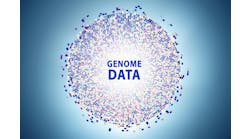Last year Healthcare Innovation wrote about Penn Medicine’s effort to incorporate direct ordering and discrete genomic results in the EHR. Now researchers at UT Southwestern (UTSW) in Dallas report that they are developing an interface to make genomics data from next-generation sequencing visible and actionable in real time for clinicians and researchers.
With a $300,000 grant from the National Comprehensive Cancer Network, funded by Eli Lilly and Co., researchers at UTSW’s Harold C. Simmons Comprehensive Cancer Center are working to design and implement integrated decision tools and an associated workflow to enable users to readily and strategically search tests and relevant diagnoses.
Next-generation sequencing (NGS) has opened the door to personalized cancer treatments by identifying genetic mutations in tumors that offer pathways for drug therapies, but this data is not easily accessible to physicians within the flow of a patient’s health records, the UTSW researchers say.
“Harnessing technology to integrate genomic data into the flow of patient data will allow clinicians to provide the best treatments to more cancer patients on an individualized basis,” said Carlos Arteaga, M.D., director of the Simmons Cancer Center and associate dean of oncology programs at UT Southwestern, in a statement. Simmons Cancer Center is one of 31 member institutions of the National Comprehensive Cancer Network.
David Gerber, M.D., a lung cancer specialist and associate director of clinical research at Simmons Cancer Center, noted that the current complexity of ordering, viewing, and acting on genomics testing can be so overwhelming some physicians skip it altogether. “Precision medicine based on molecular profiling of tumors has had a tremendous impact on multiple types of cancer," he said in a statement. “We’ve identified about 10 different genomic subsets of lung cancer that have their own available targeted therapies. But if you don’t order the test, you're not going to know what drugs to prescribe.”
“We run NGS on lung cancer patients almost universally nowadays, checking maybe 300 to 600 genes for somatic mutations,” said Waddah Arafat, M.D., medical director of cancer clinical informatics at Simmons and a member of the NCCN’s Electronic Health Records (EHR) committee, in a statement. “These are genes that cause cancer or are significant for the control of cancer growth, spread, and, sometimes, resistance to standard treatment. Yet genomic test results come back in a way that often is delayed relative to the treatment plan, and not available at point-of-care. Solving this problem became our mission.”
Like Penn Medicine, UTSW was an early adopter of Epic’s genomics module, an interface that enables the user to receive NGS data directly from the laboratory doing the test. The goal now is to create a seamless interface with NGS laboratories so test results integrate into the chart as discrete data – presented in the way that results appear from a blood panel. Physician alerts are sent selectively at “nodes” in the decision tree of care to prevent alert fatigue.
At Penn Medicine, the IT team created a Precision Medicine tab in the EHR where clinicians could go and just with a click, be in a particular patient's genetic workspace. They worked with the clinical teams to set up the ordering work flow and interfaces to the outside labs. “The first one that we integrated with is Ambry Genetics. Being able to integrate orders and then discrete results coming back into the EMR was a huge win because now our counselors can go in and look at the breakdowns of a particular test and make clinical decisions based on those results,” said Jeffrey Landgraf, Penn Medicine’s corporate director for information services. “We are building clinical decision support around that as well.”
While the new interface and decision tools target the module’s application to non-small cell lung cancer (NSCLC), the UTSW research team says they will serve as a template for other cancers as well.
Since the test results present as discrete data elements, they can also be used to answer quality and research questions. The team envisions running weekly reports to capture biomarker data that would identify patients eligible for clinical trials at Simmons and beyond.


